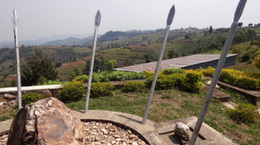What is resistance?
It is difficult to define resistance precisely. During genocide however, resistance is better understood as a means of defense to protect the potential victims’ liberty, dignity and lives. Yet this does not capture the nuances. It is difficult to restrict understanding of the term to defined actions. People can resist by fighting, sabotaging, not complying, practicing illegal activities, etc. An act of resistance can fall into several different categories.
Victims may not resist to change the system, but to preserve their cultural or religious identity within it. Non-victims in positions of power, such as consuls Chiune Sugihara and Jesse B. Jackson, may resist by saving victims. Others, with less power, may risk their lives to protect neighbors or strangers who are targeted. Even the struggle to live, in the face of systematic hate and killing, can be considered resistance. Whatever the form, resistance always comes with great risk.
This exhibition explores resistance through several facets: refusing to comply, fighting back, speaking out, preserving community, and humanitarian aid.















